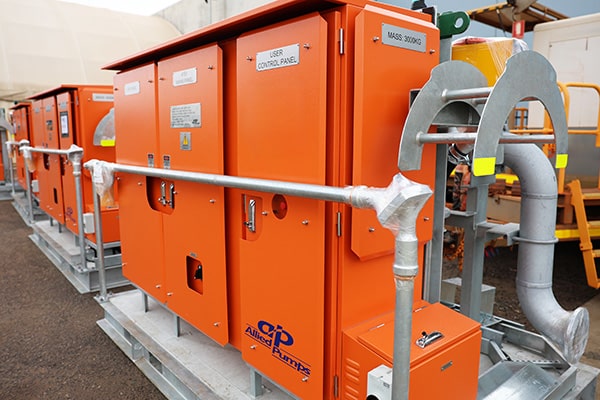
When it comes to dewatering on Australian mine sites, selecting the right equipment can impact not only operational efficiency but also long-term costs and environmental sustainability.
Two popular options for running bore pumps are Variable Speed Generators (VSG) and Variable Speed Drives (VSD). Today we’ll break down their differences and explore which solution is the better fit for your operation.

A VSG directly controls its engine speed to match the load requirements (mainly motor driven pumps), ensuring that the generator only produces as much power as needed. This offers a range of advantages, particularly for remote sites running off-grid systems.

A VSD adjusts the speed of the motor itself, controlling the pump’s flow rate based on demand, and is used when connected to a constant power supply, such as from a grid or a fixed speed generator. One of its major advantages is its versatility in power sources, allowing easy transition from generators to mains power.

When considering whether to use a VSG or a VSD for running bore pumps in a dewatering system, your choice will depend largely on your operational setup and needs. Below is a breakdown of each one of them.
If your dewatering system is powered by a generator, a VSG provides superior fuel savings and emissions reductions. While a VSD helps optimise energy use, it does not directly impact fuel consumption from the generator. This makes the VSG a more attractive option for sites looking to reduce their carbon footprint and save on fuel costs.
A VSD offers more precise control over the pump’s operation, allowing for better management of varying water inflows and demands. If precision and adjustability are critical, especially if water levels fluctuate, a VSD may be the better option.
If you’re using a generator as your primary power source, the fuel efficiency and emissions benefits of a VSG might outweigh the more precise control offered by a VSD. On the other hand, if you have access to a stable grid or are planning to electrify the mine site, a VSD’s ability to transition smoothly from genset to mains power becomes a major advantage.
Over time, both systems can provide significant savings, though in different ways. A VSG’s lower fuel and maintenance costs make it ideal for off-grid operations, while a VSD’s energy optimization and extended equipment lifespan may be more suited to operations where dewatering demand fluctuates frequently.
Both VSGs and VSDs offer distinct benefits for running bore pumps on Australian mine sites. At Allied Pumps, we can help you select the right system for your needs to ensure your dewatering processes remain cost-effective, reliable, and environmentally conscious.
Explore our VSG and VSD ranges today, plus discover more mining solutions including water storage tanks and mining fire pumps. Don’t hesitate to contact us for more details about our custom products.

Contact us to learn about how we can help you with your pump needs.
CALL US NOW EMAIL US